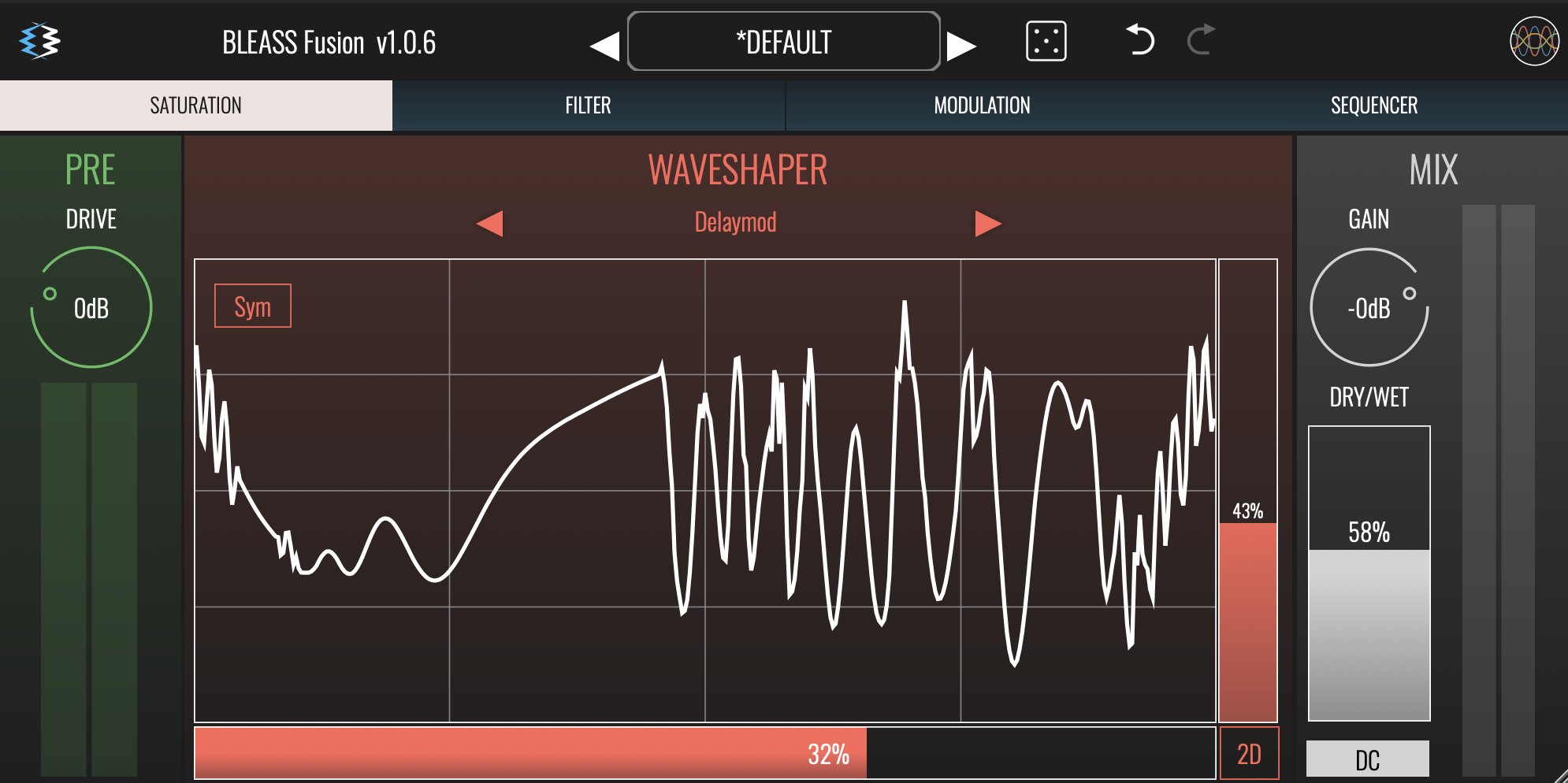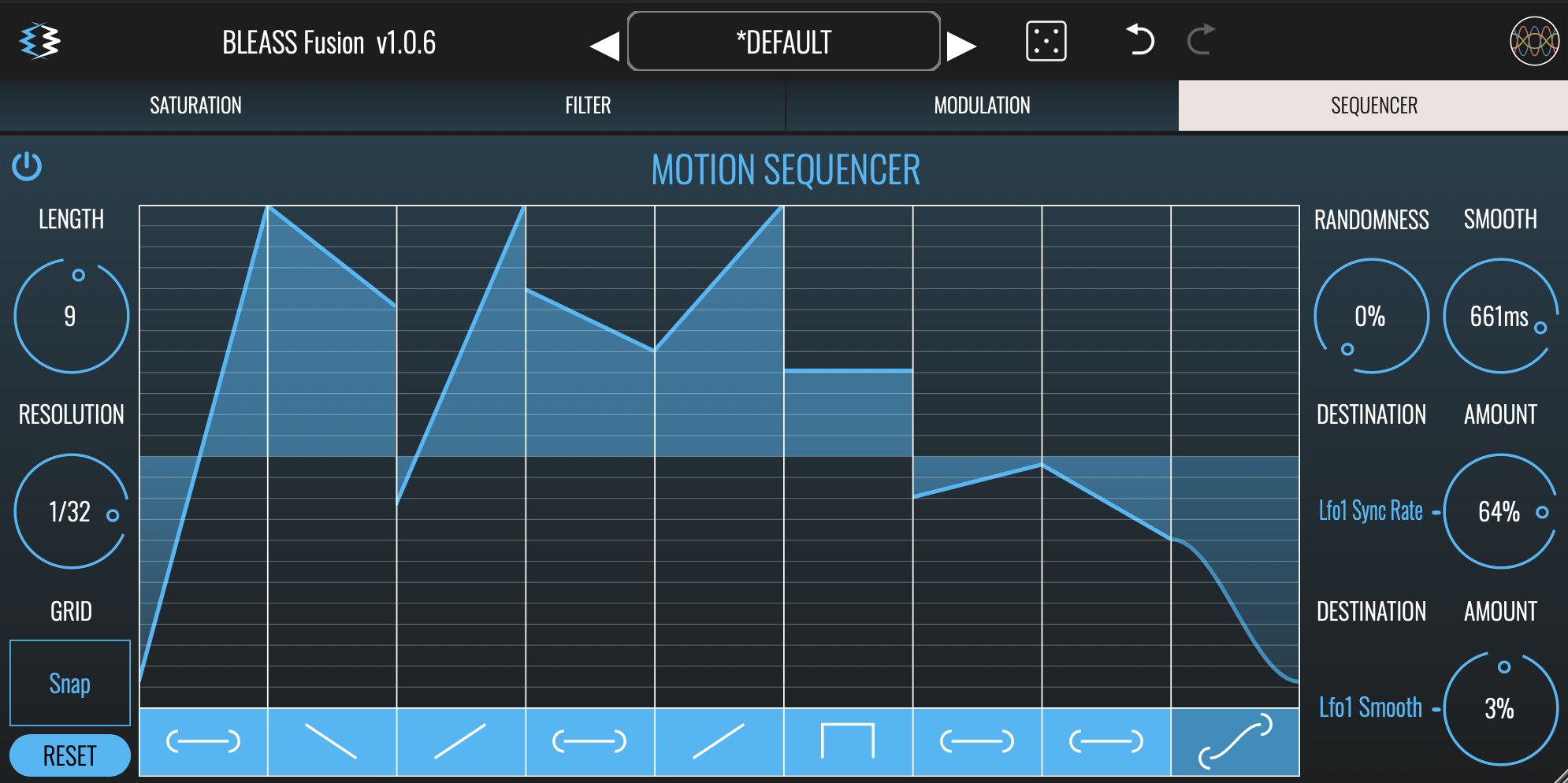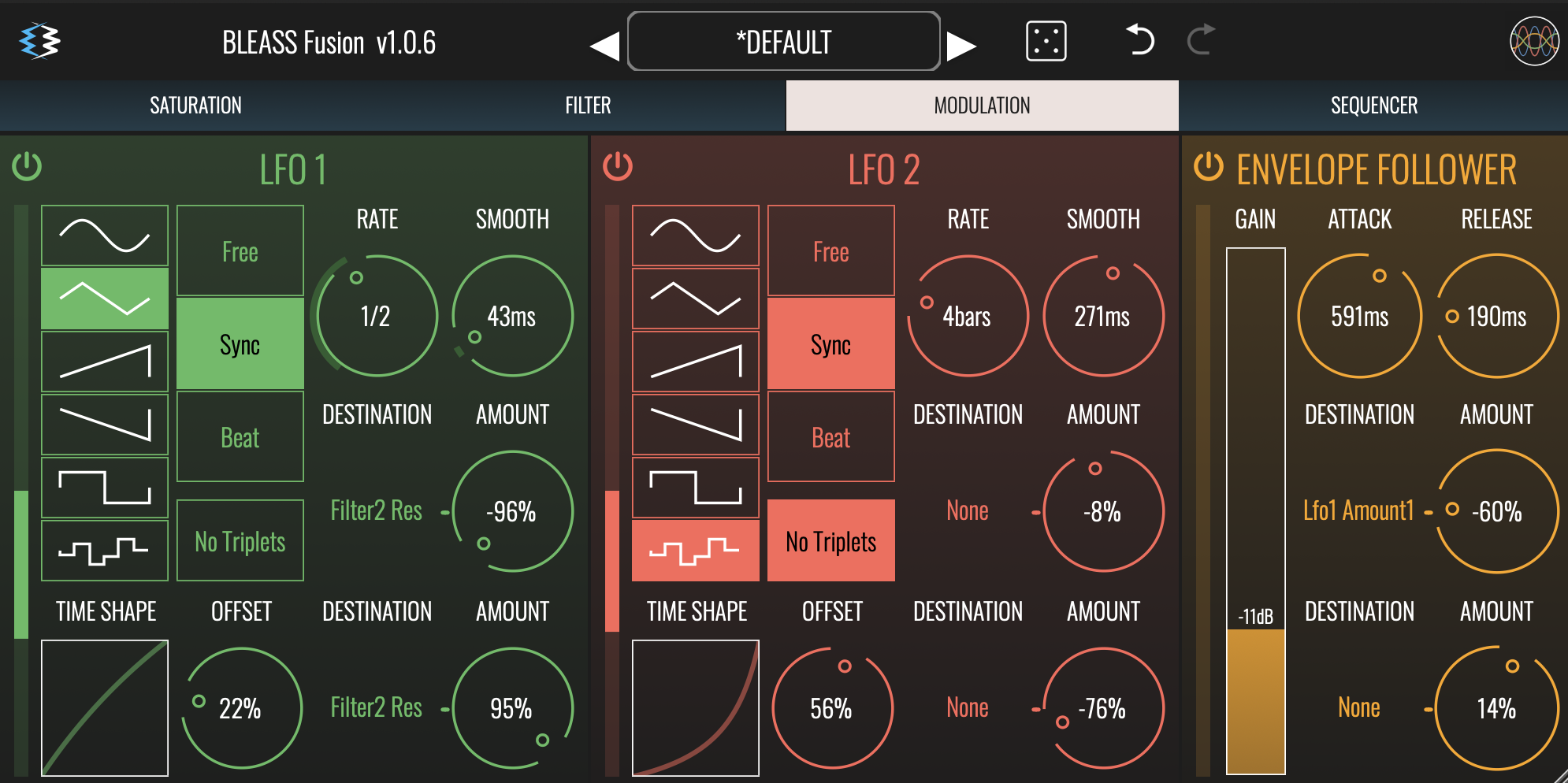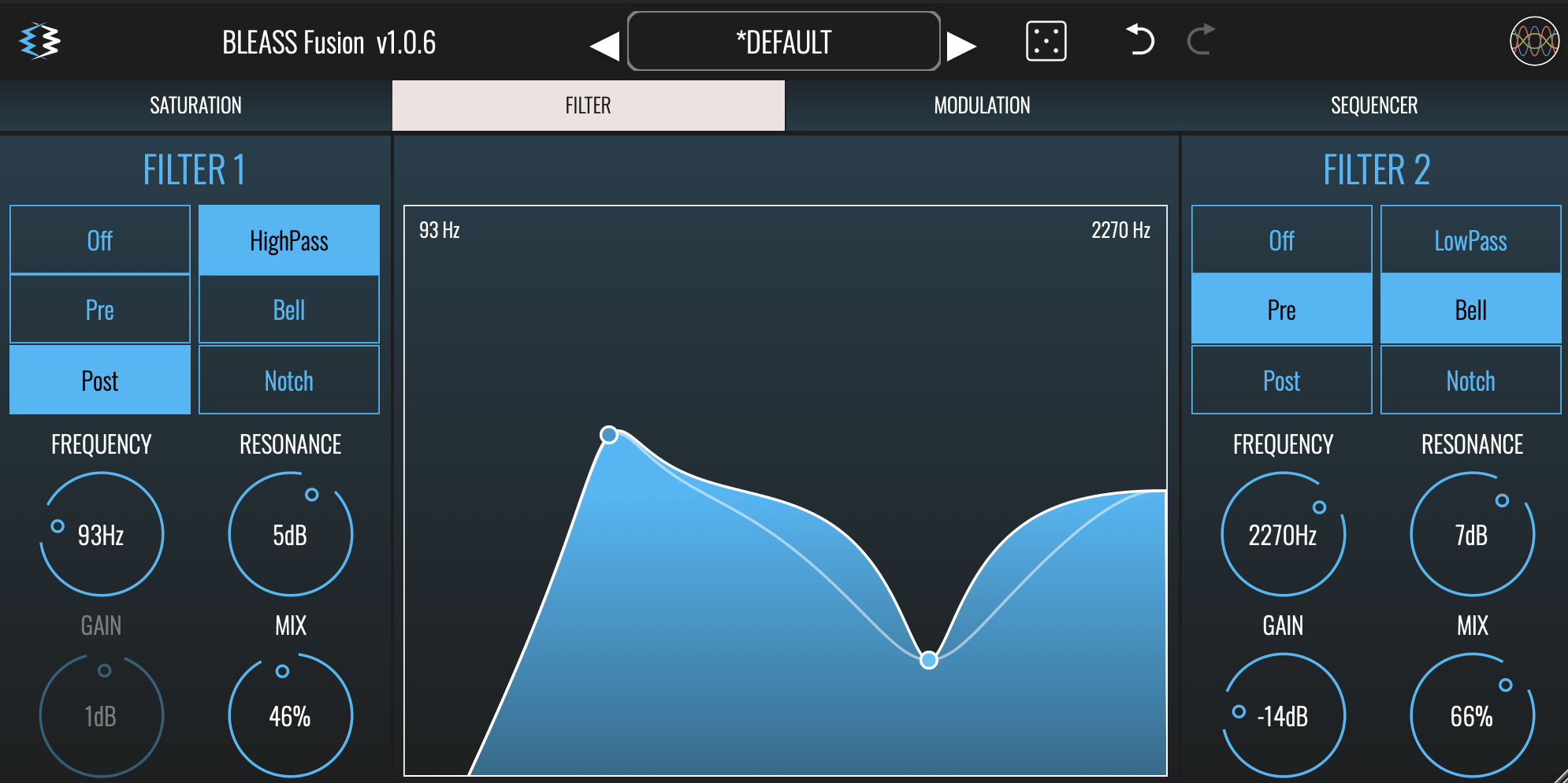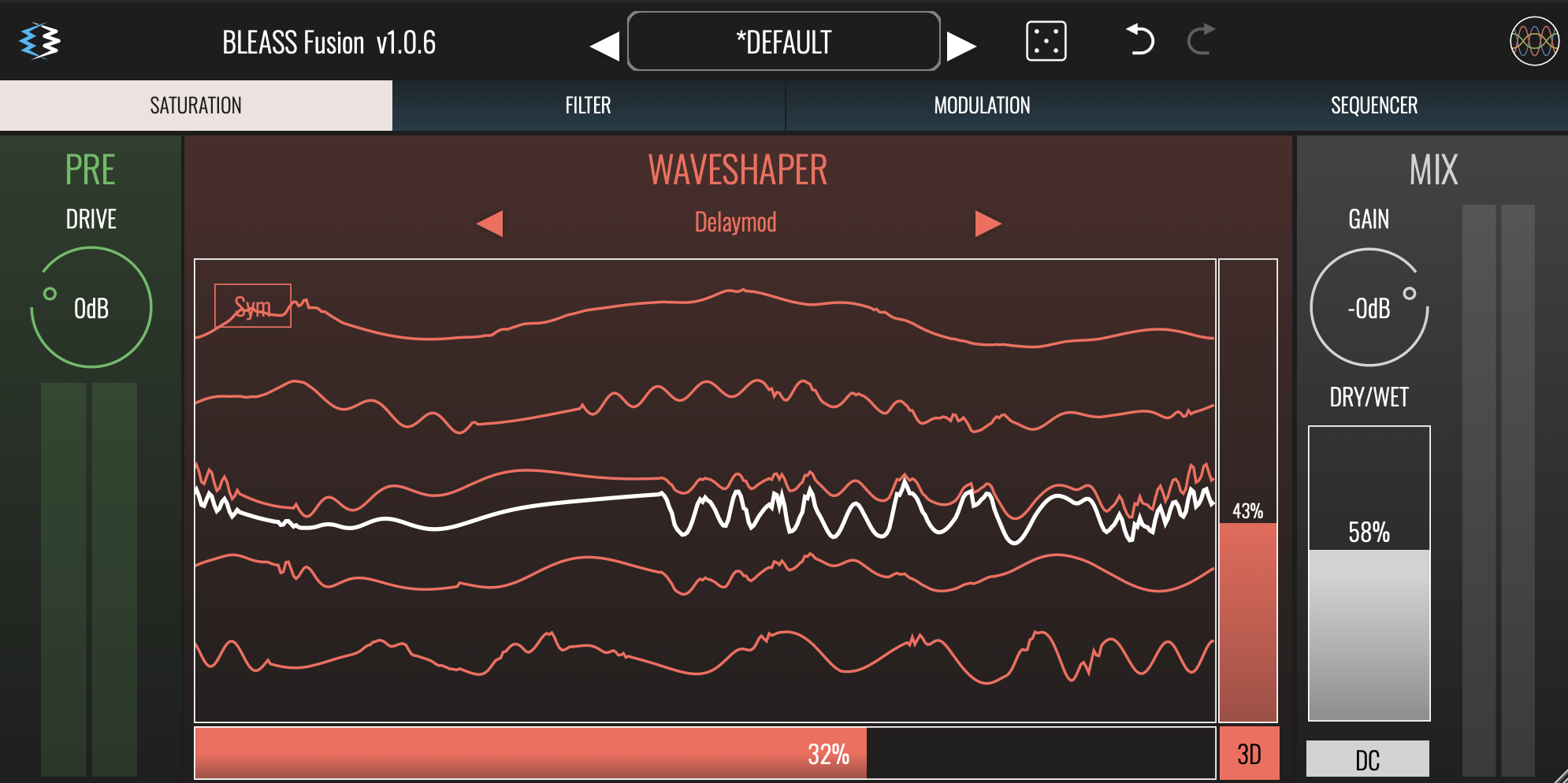FUSION Review
BLEASS is a company I haven’t touched yet, I’ve been aware of them for some time and always keep an eye on their new releases, but I finally had to purchase something from them with the release of Fusion. Fusion is a plugin I’ve been wanting for some time, a wavetable distortion, that allows for wavetable import. While wavetable distortions have existed in the past, none to my knowledge have been capable of importing tables. This gives you a so much control over various shaping and motion in new ways. I should mention before we continue, that applying motion to the table does create noise and zippering, even if there is no input signal. This might be a bug, or a deal breaker for some, but for myself it’s a new way to create glitchy textures.
On top of wavetable distortion, Fusion also has the ability to apply phase distortion to the wavetable. Both table position and phase bending can be controlled simultaneously via the XY grid. Unfortunately clicking sliders or XY region cause the controls to jump to your current mouse position. this is fine on many effects, but with a distortion I think I’d prefer at least the sliders to be relative rather than absolute, making it easier to make small changes.
Fusion also includes a dual filter section, each filter can be pre or post distortion, and either cut, bell, or notch. Using each as a bell prior to distortion allows you to really sculpt the tone of the shaping. Finally modulation is included in Fusion with two LFOs, an envelope follower, and step sequencer. The LFOs are nice for adding motion, applying these to the table position allows you to create distortion textures that have never really been possible with anything else. The envelope follower is also excellent for table position, this lets you create dynamic wave shaping, where amplitude or transients can affect the distortion curve. The sequencer and LFOs can all be used as random modulation sources as well, if you just want to inject a bit of chaos into the system.
Fusion is a pretty simple concept, wavetable distortion, there’s not a whole lot else for me to say about it other than it being a neat concept. Currently I’ve tested out my own wavetable collection, and for the most part, my rather complex shapes all tend to sound fairly similar, but much like with LFO tables, using shapes that were designed for oscillators doesn’t necessarily equate to interesting motion. I think with a bit of experimentation and the use of a good wavetable editor, designing tables for the purpose of wavetable distortion will generate new ideas and tones.

